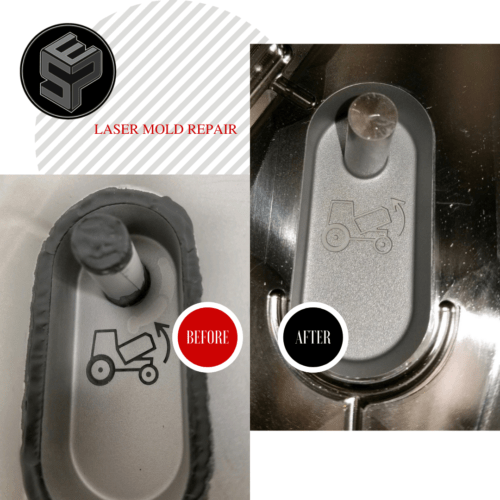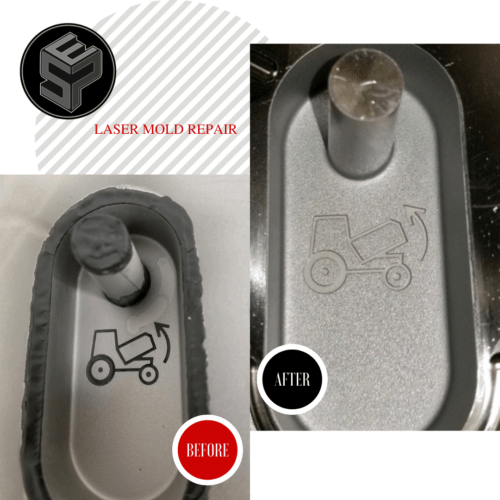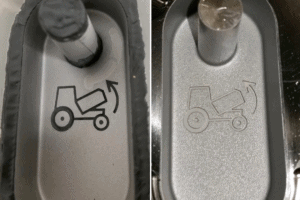Mistakes happen and we’re here to help!
St. Paul Engraving’s proprietary repair process can prolong the life of your company’s mold. Through our laser repair process we can directly repair a damaged area and blend into existing texture eliminating any visual defects to restore your tool to a like-new condition.
Important to note: if you find a textured area or parting line that is damaged on your mold, contact us before any welding or polishing is done. In many cases we can hand work the steel back and repair without any weld. If welding or polishing is required we prefer to do this in house as there are several factors to consider.
If welding is required, follow the below tips for optimal chemical repair:
- Weld with the same material the mold was made from; i.e P-20, S-7, H-13 or stainless steel. If the same material is not used, the weld may etch at a different rate leaving a white line around the weld when repairing the texture.
- Mold must be properly heated prior to welding. If not properly heated, it can cause the weld to cool too quickly. If this happens, even when using the same material, it will cause the weld to etch at different rate which would then require stress tempering to normalize the steel to get a constant etch for the best repair result.
With the advances of the laser texturing industry we have developed a laser repair process at St. Paul Engraving that can be used on any mold whether it was laser textured or chemically etched to repair these damaged areas. Through this process we can laser repair the area and blend into the existing texture eliminating any visual defects restoring you tool to a like-new condition.





